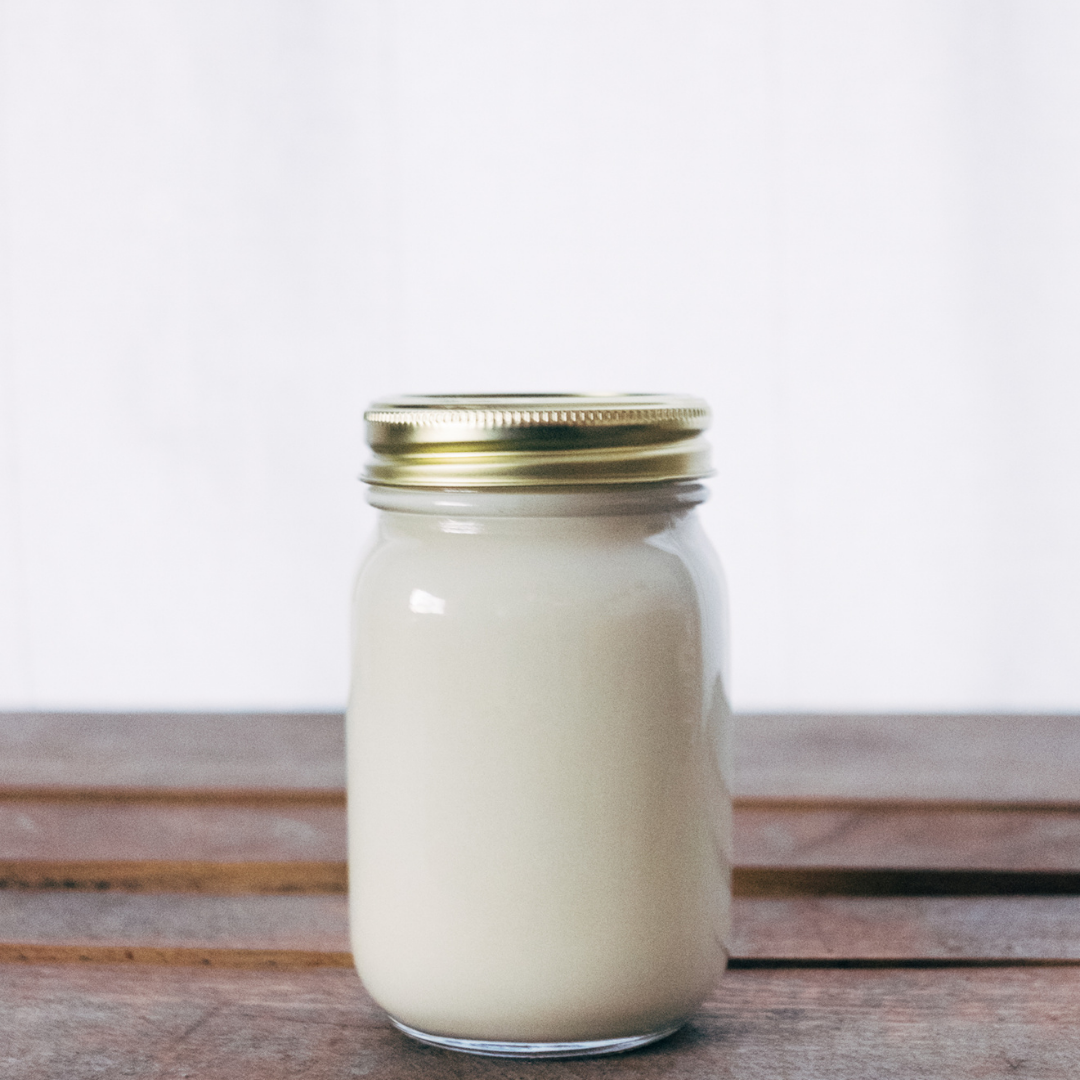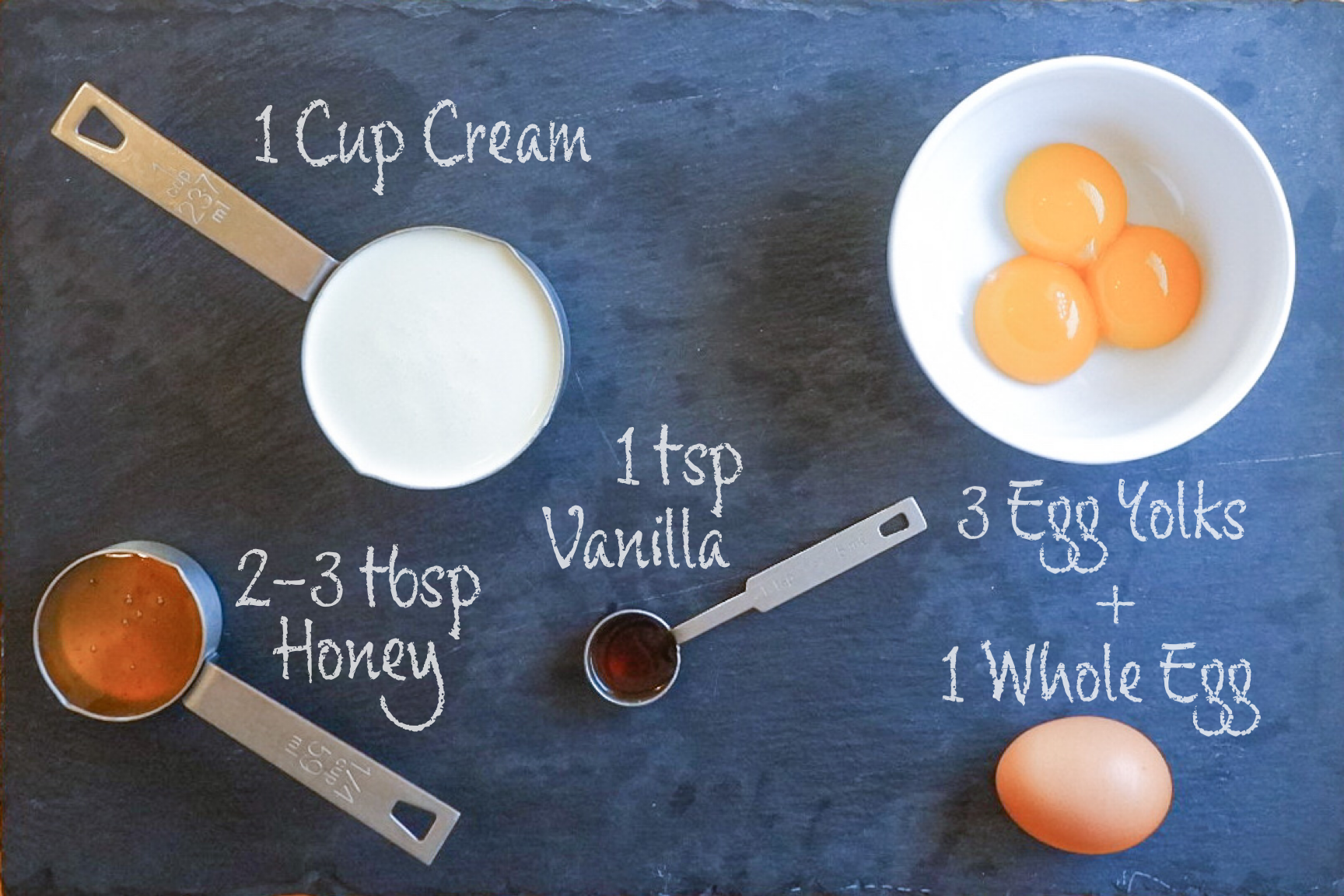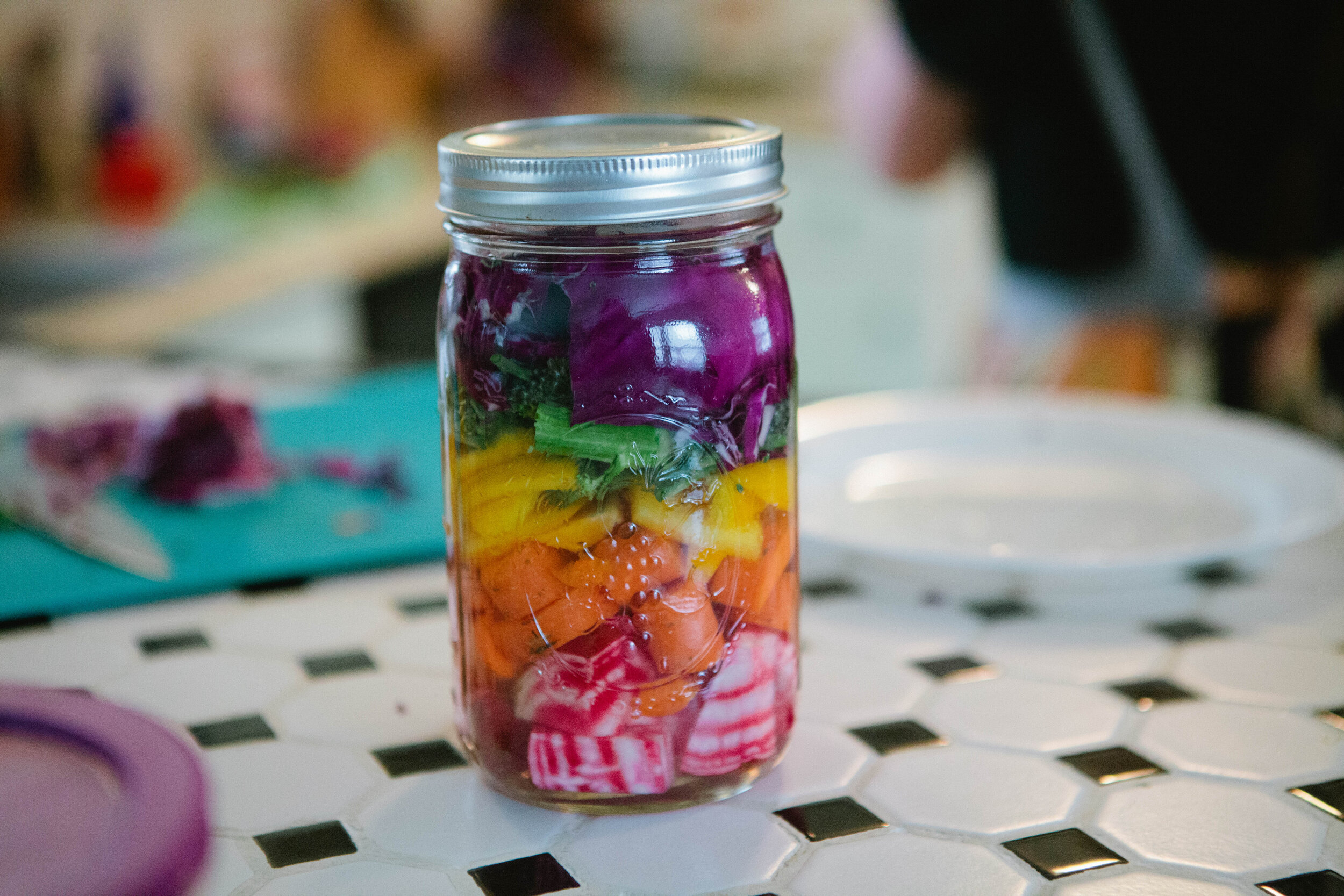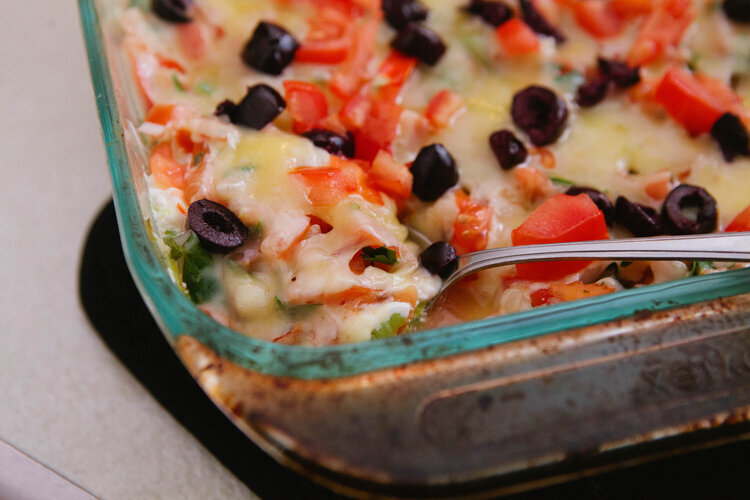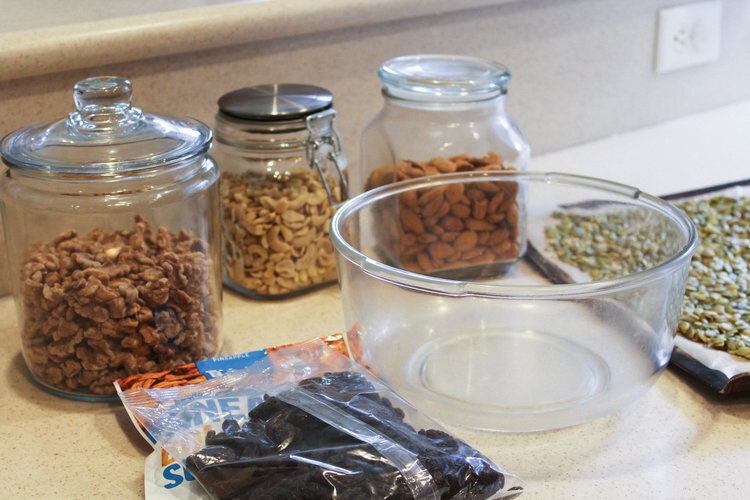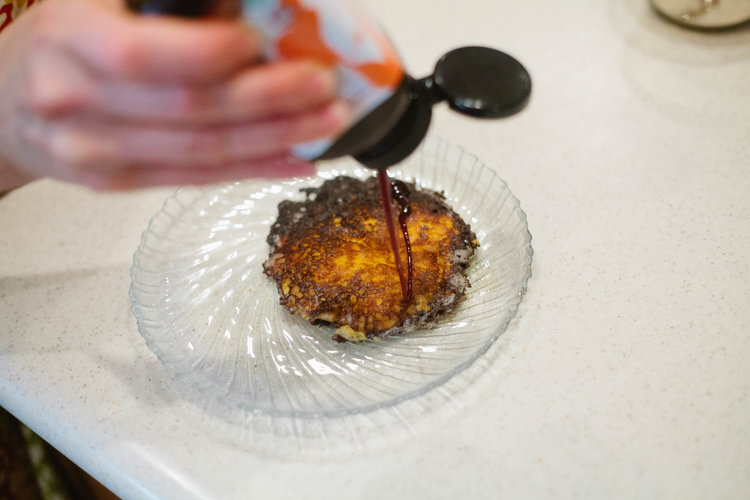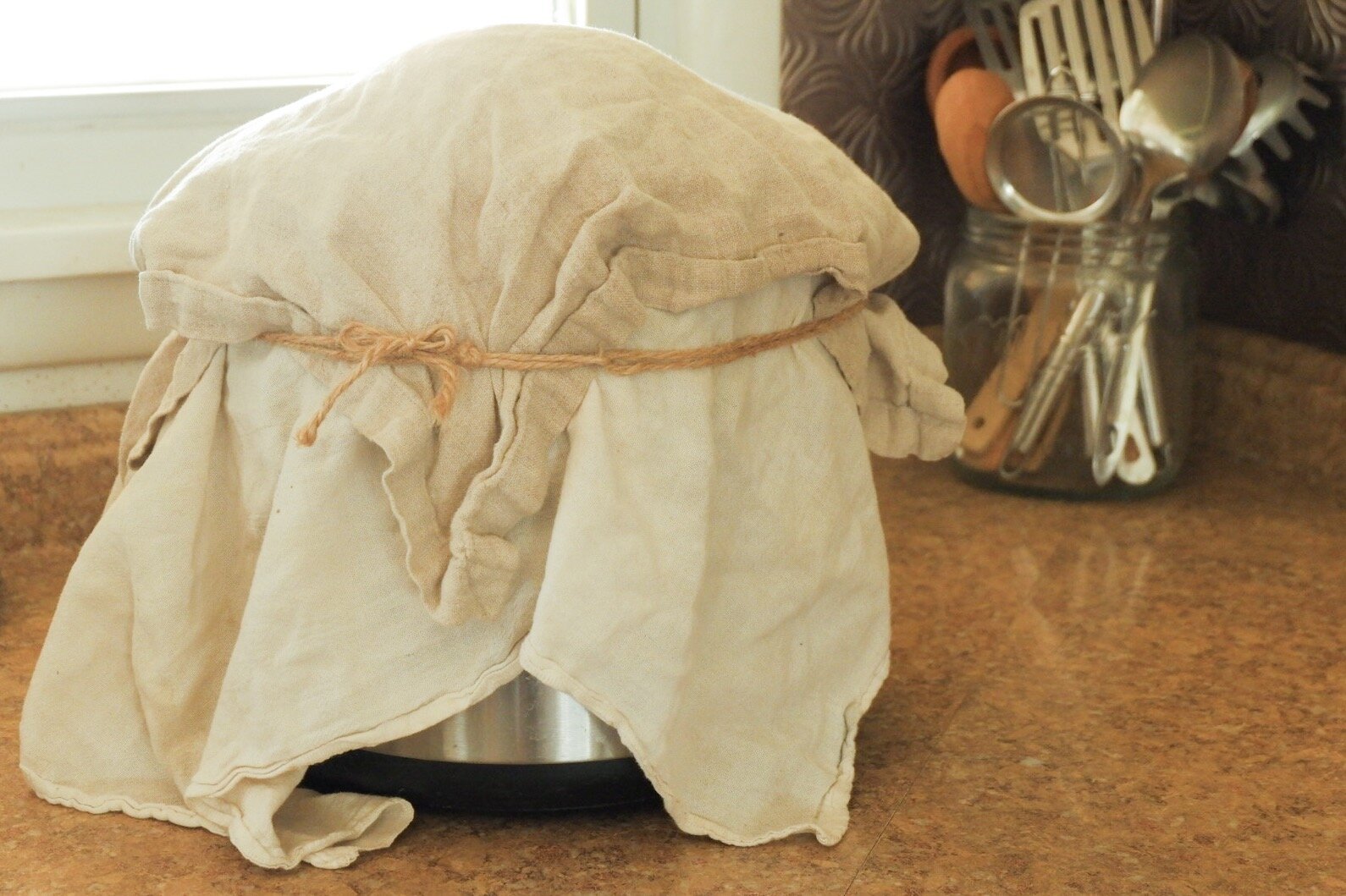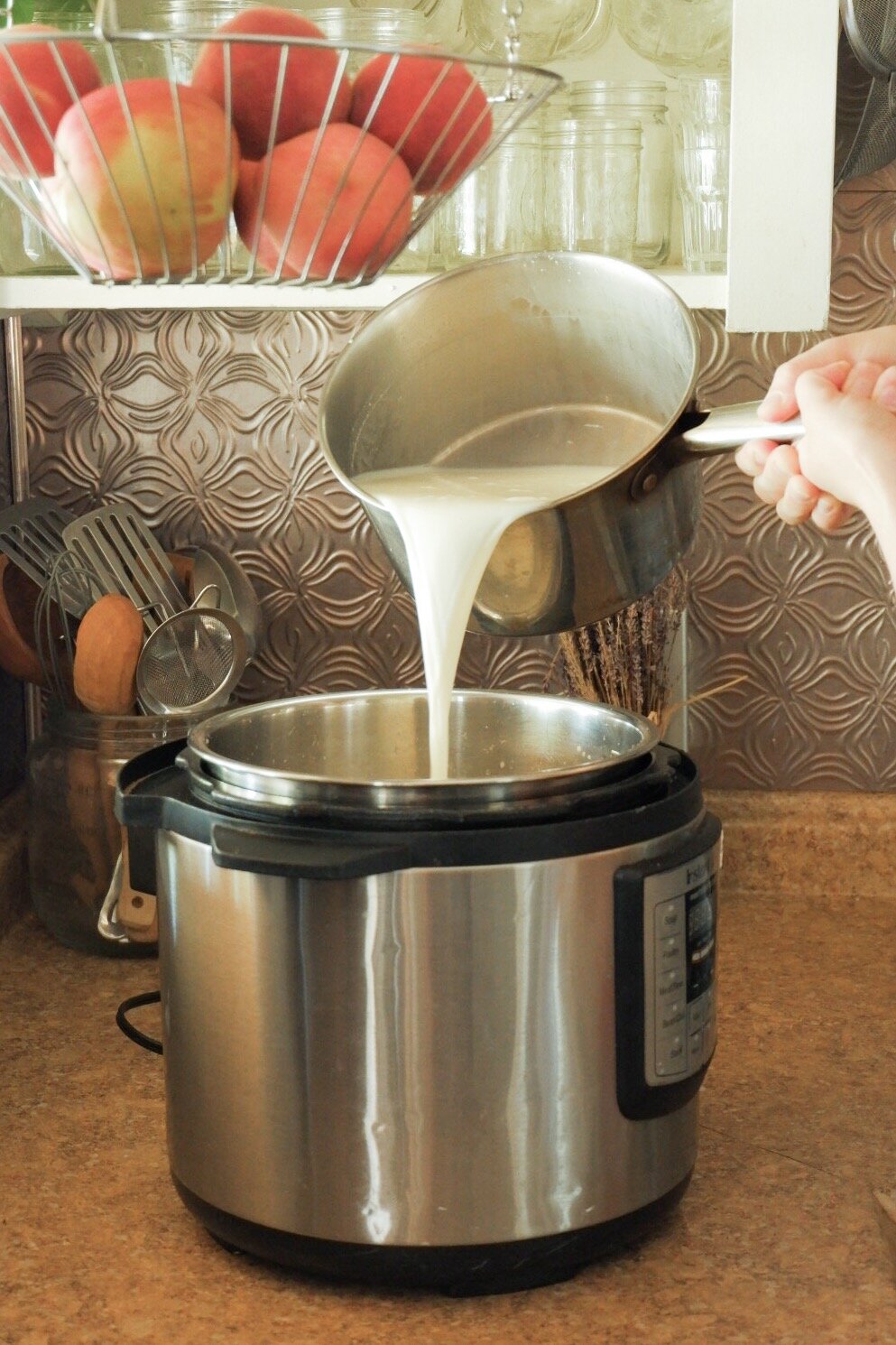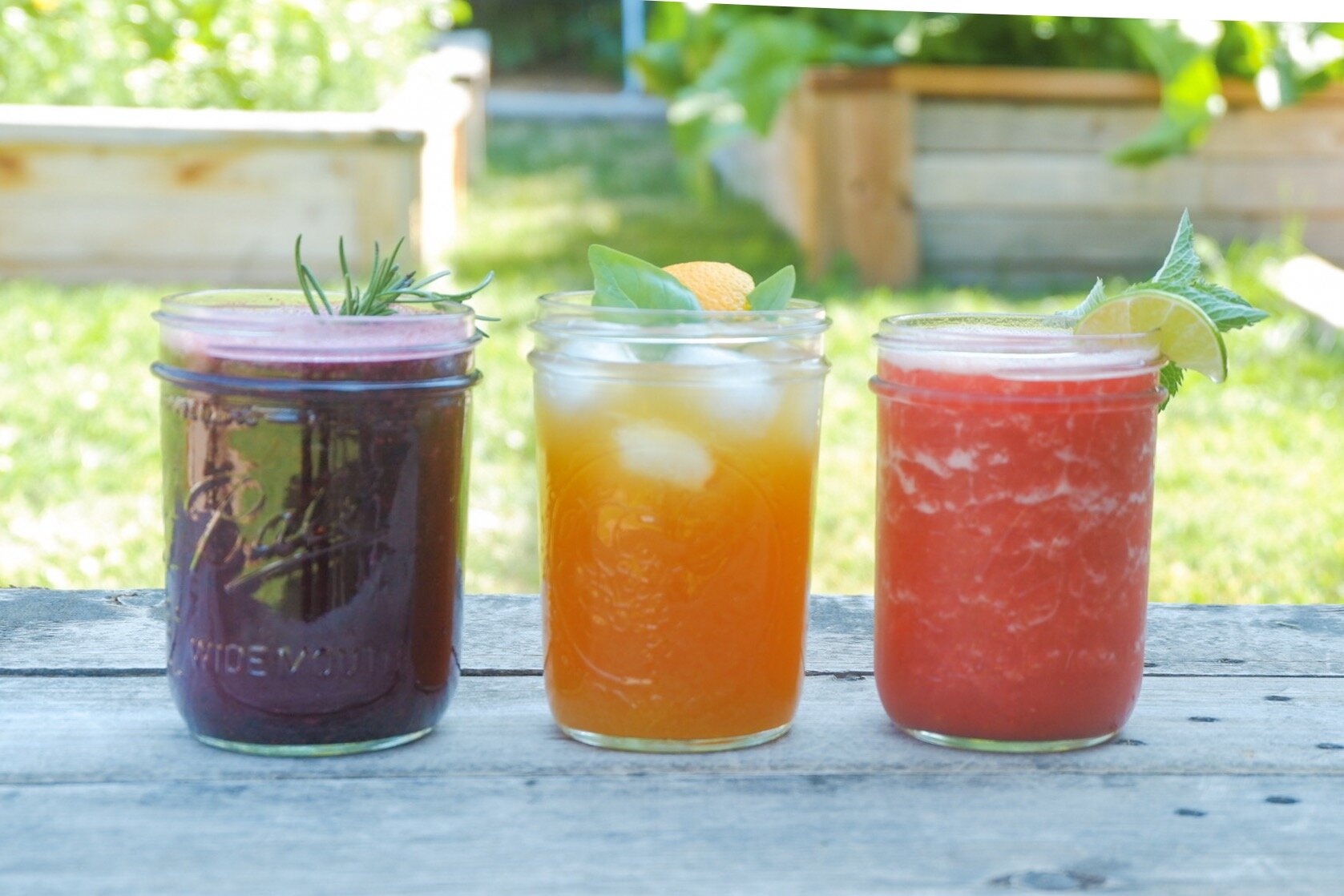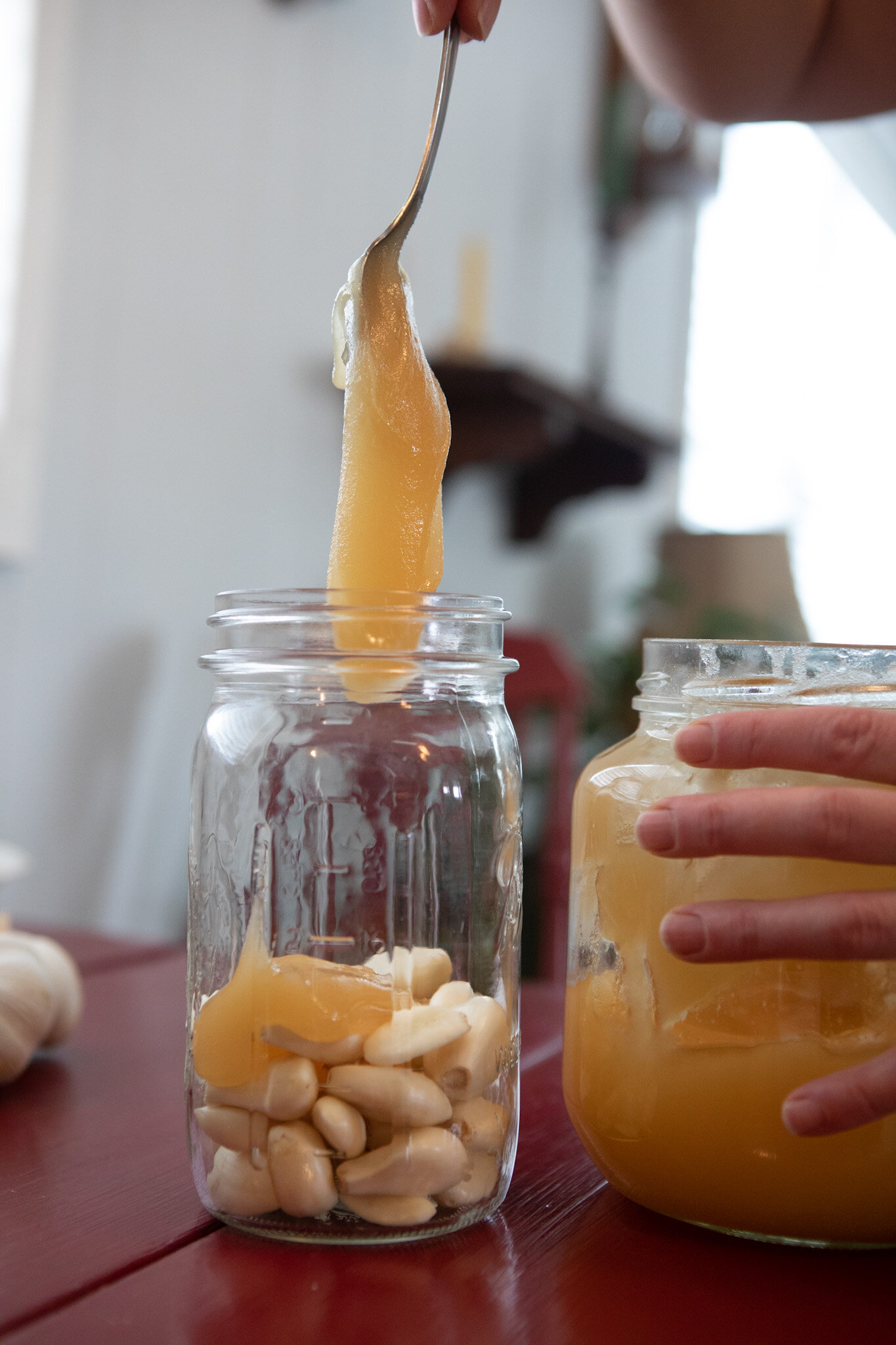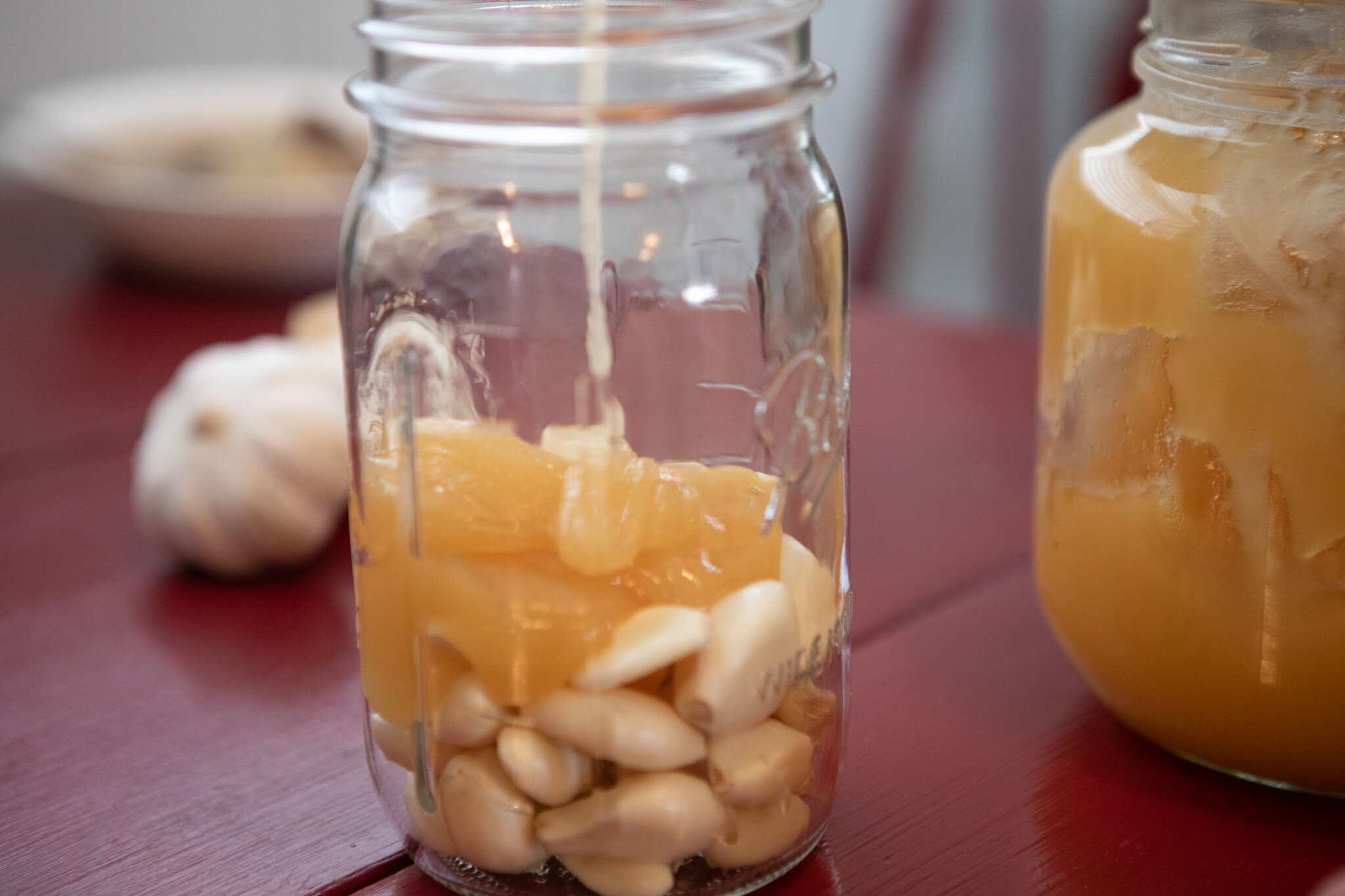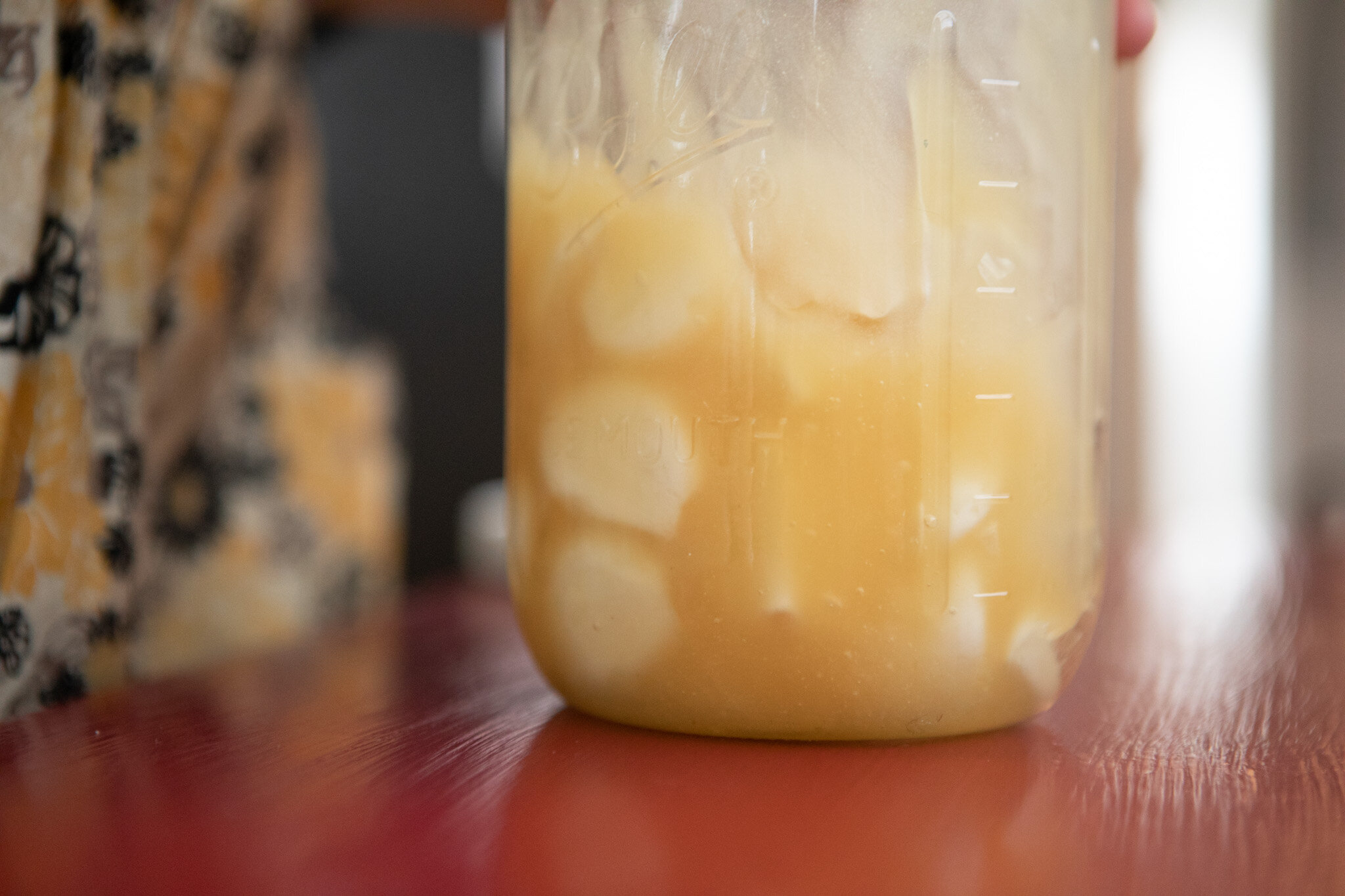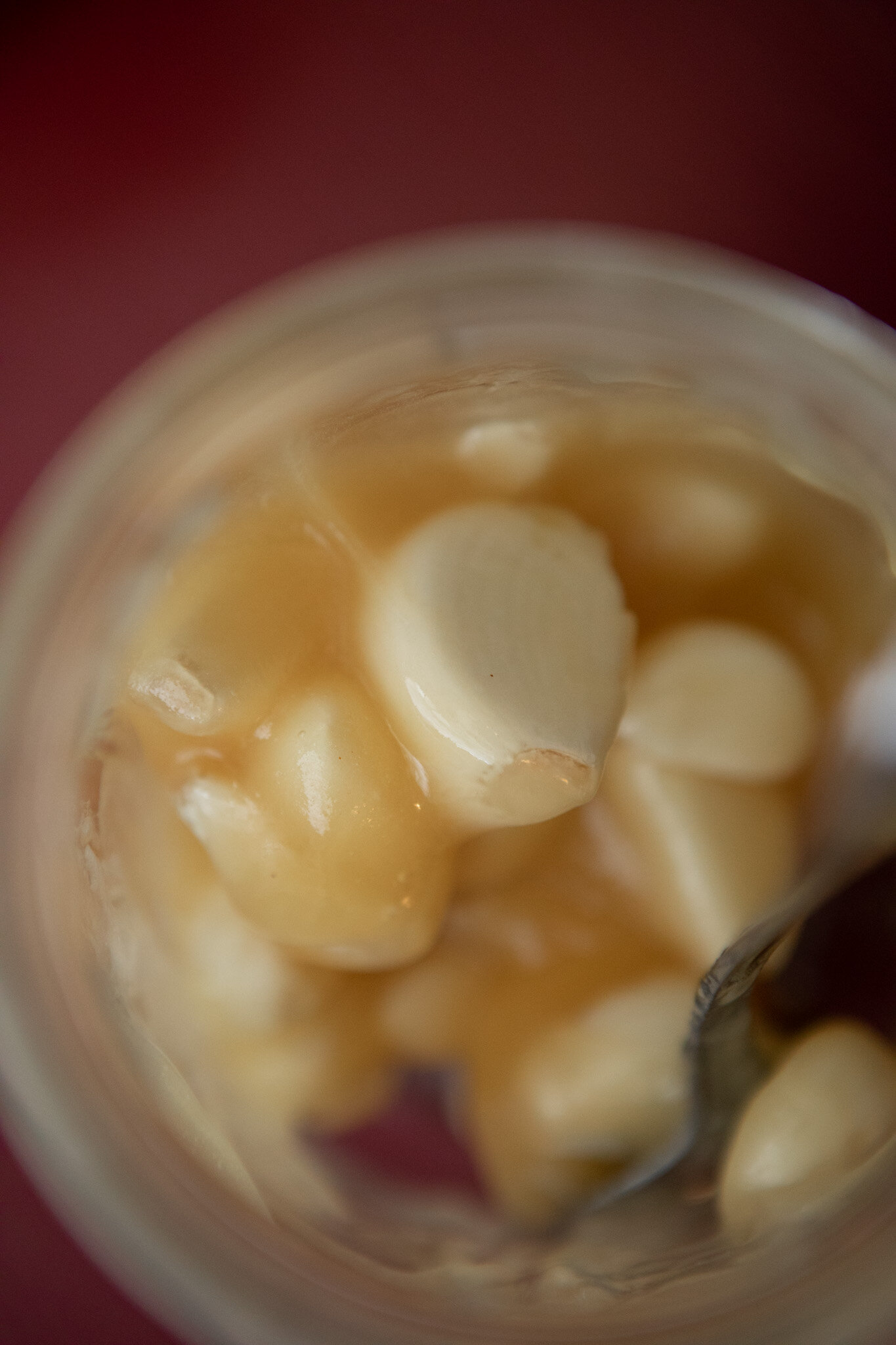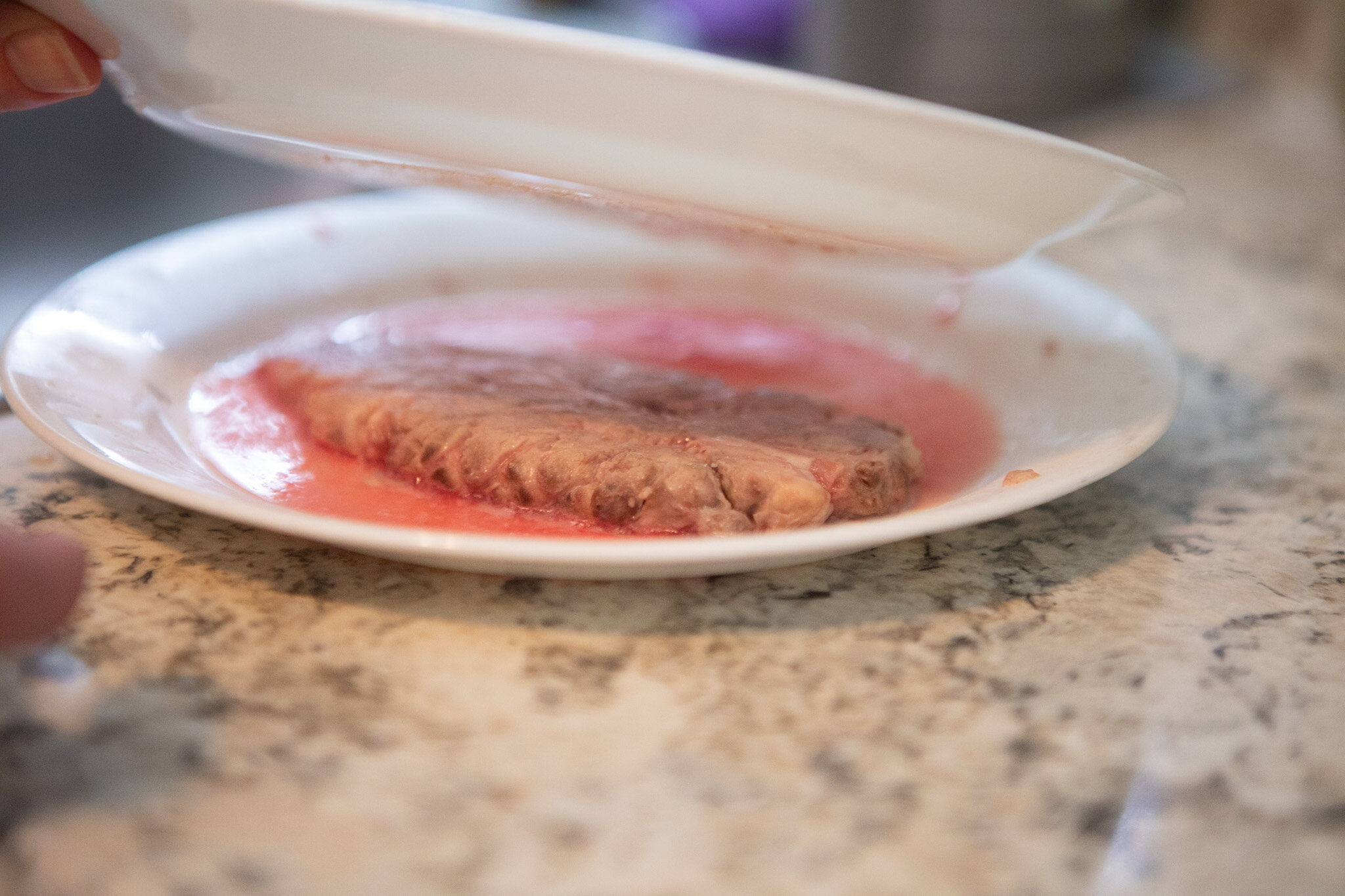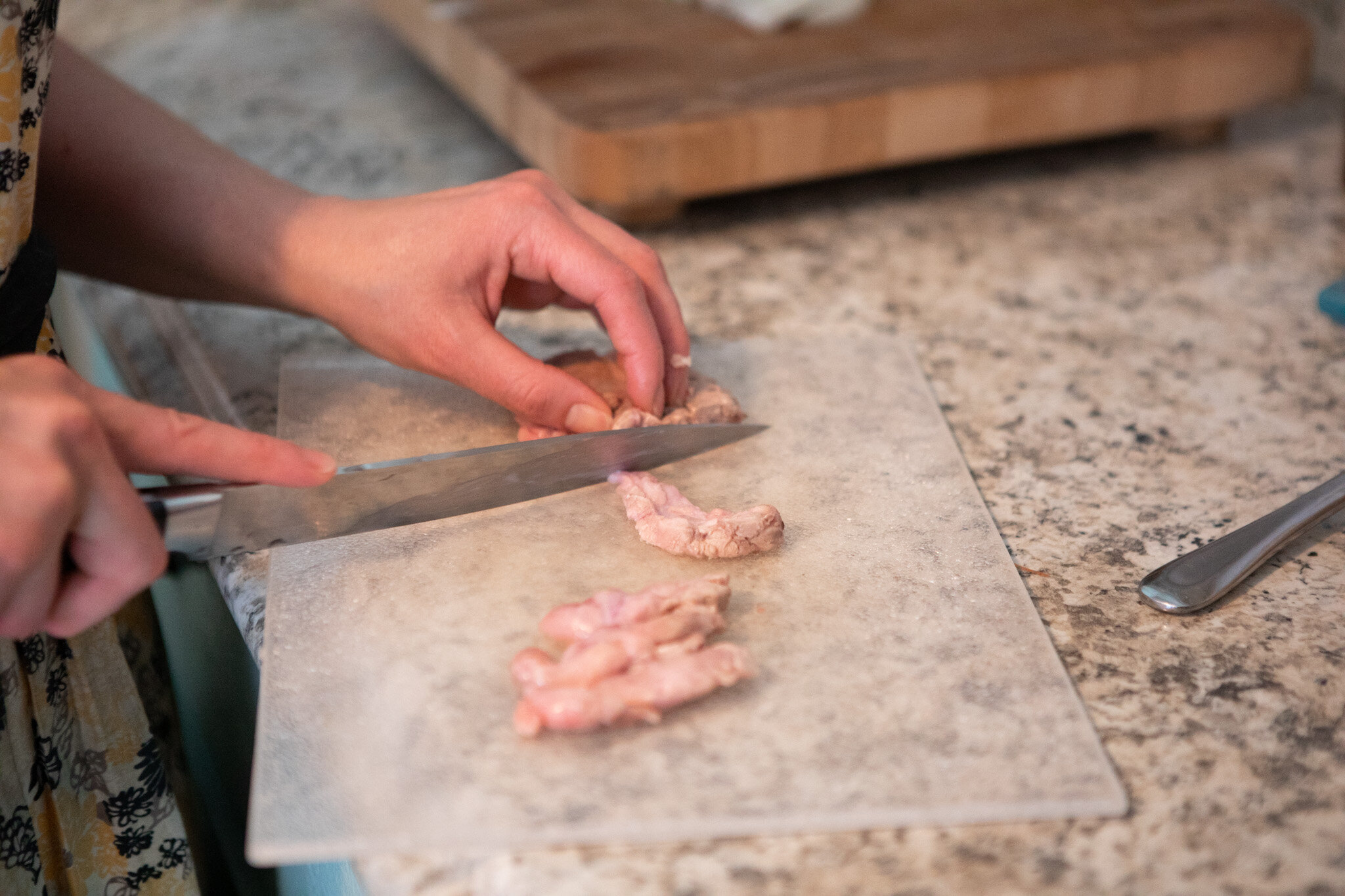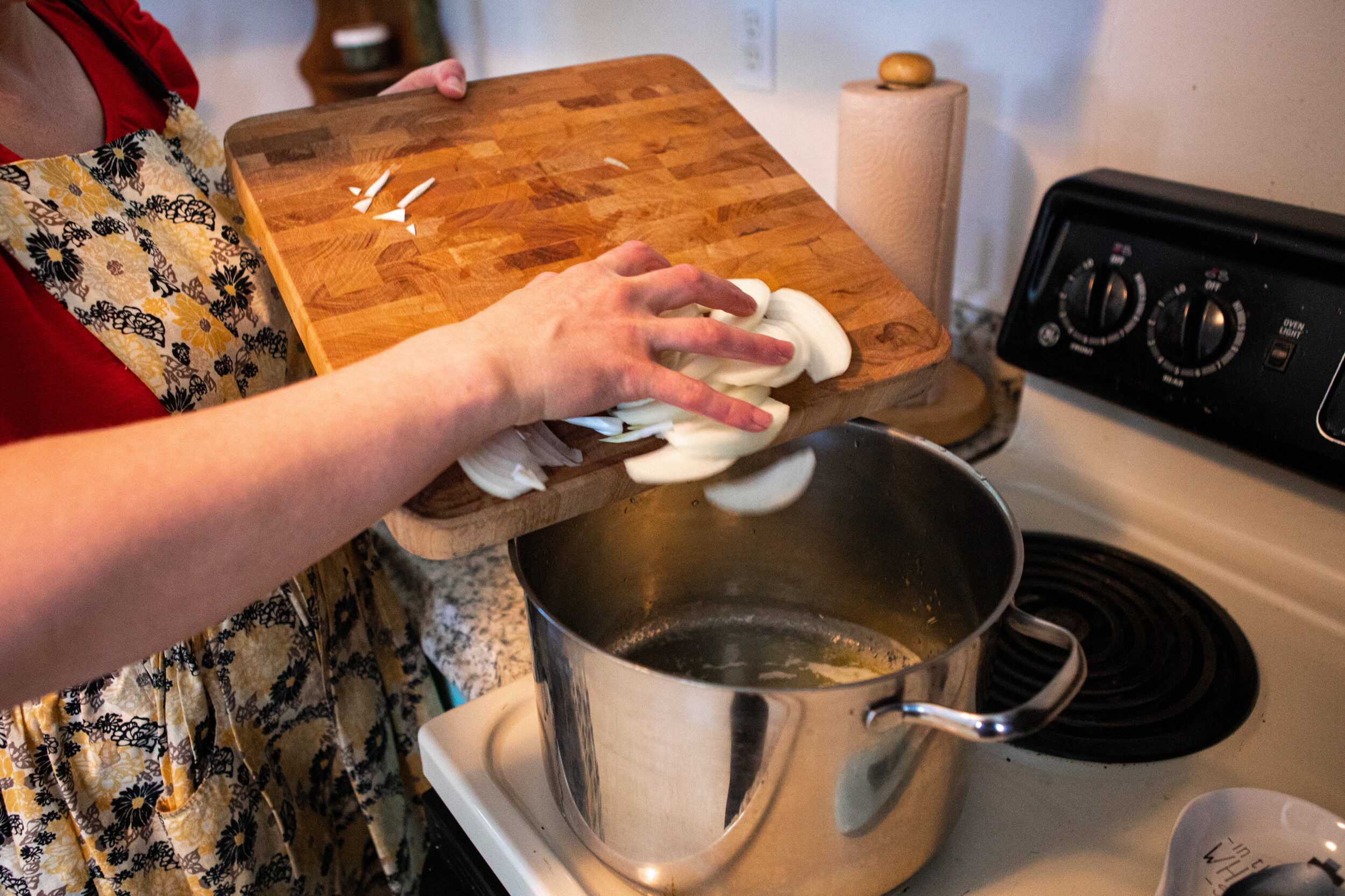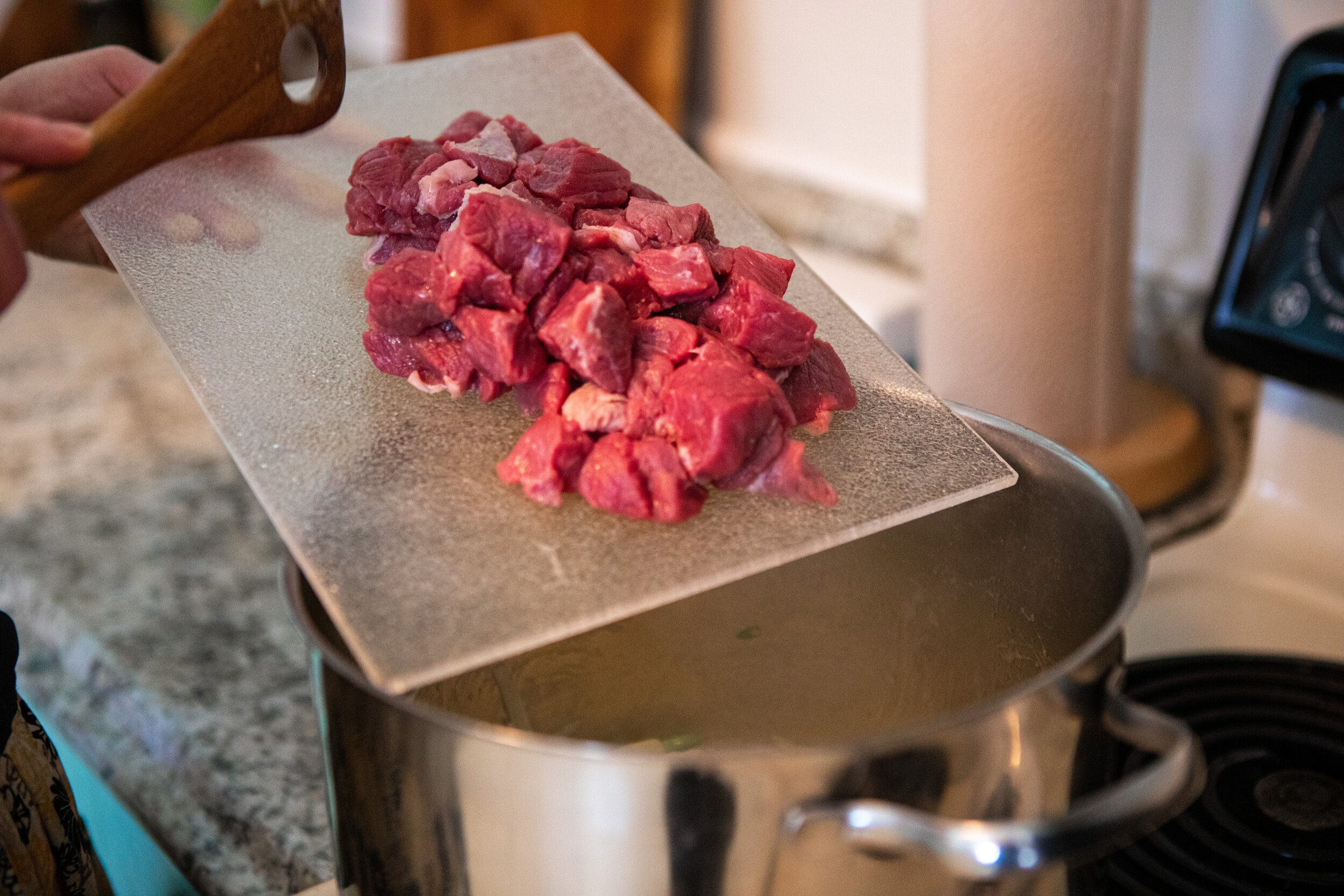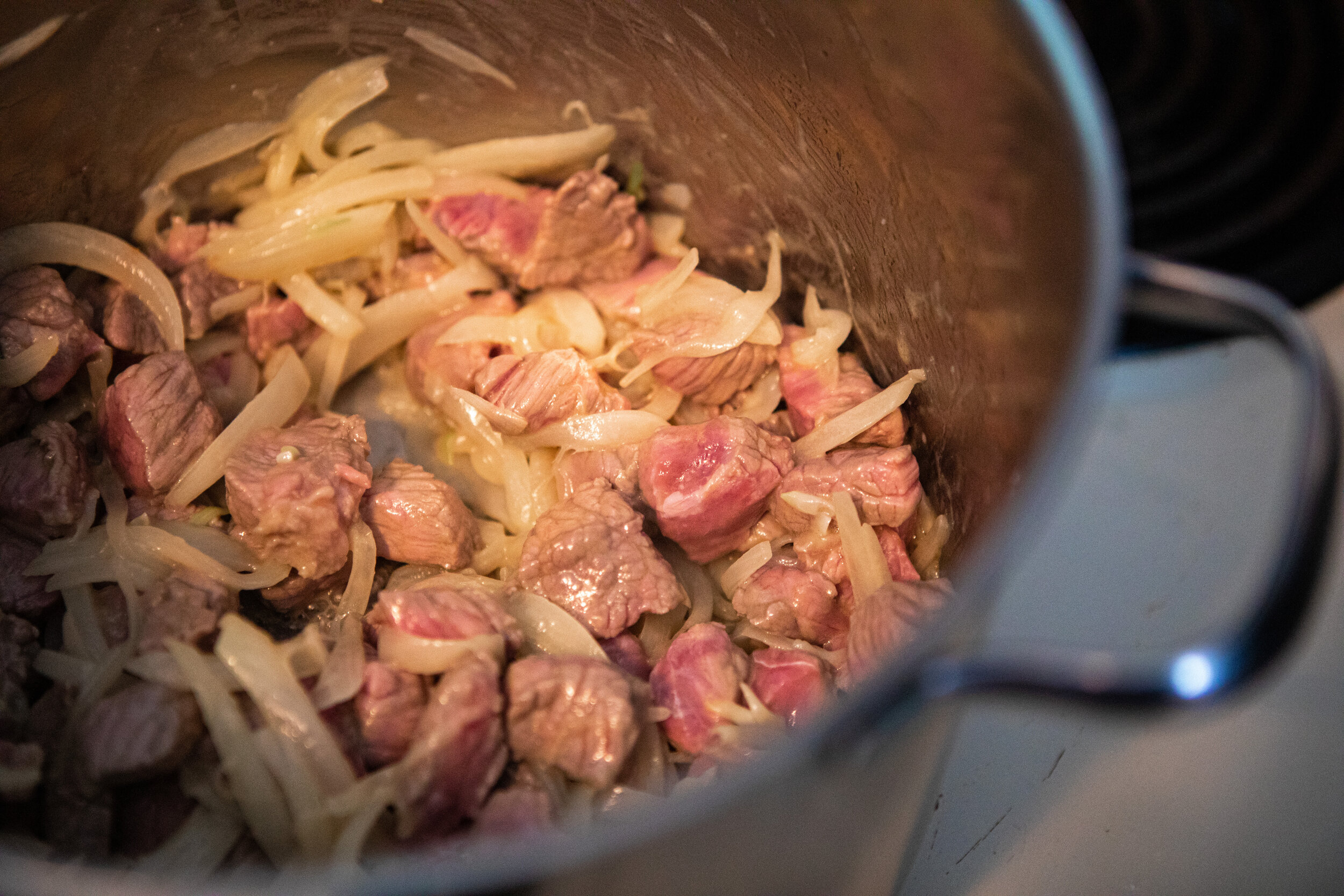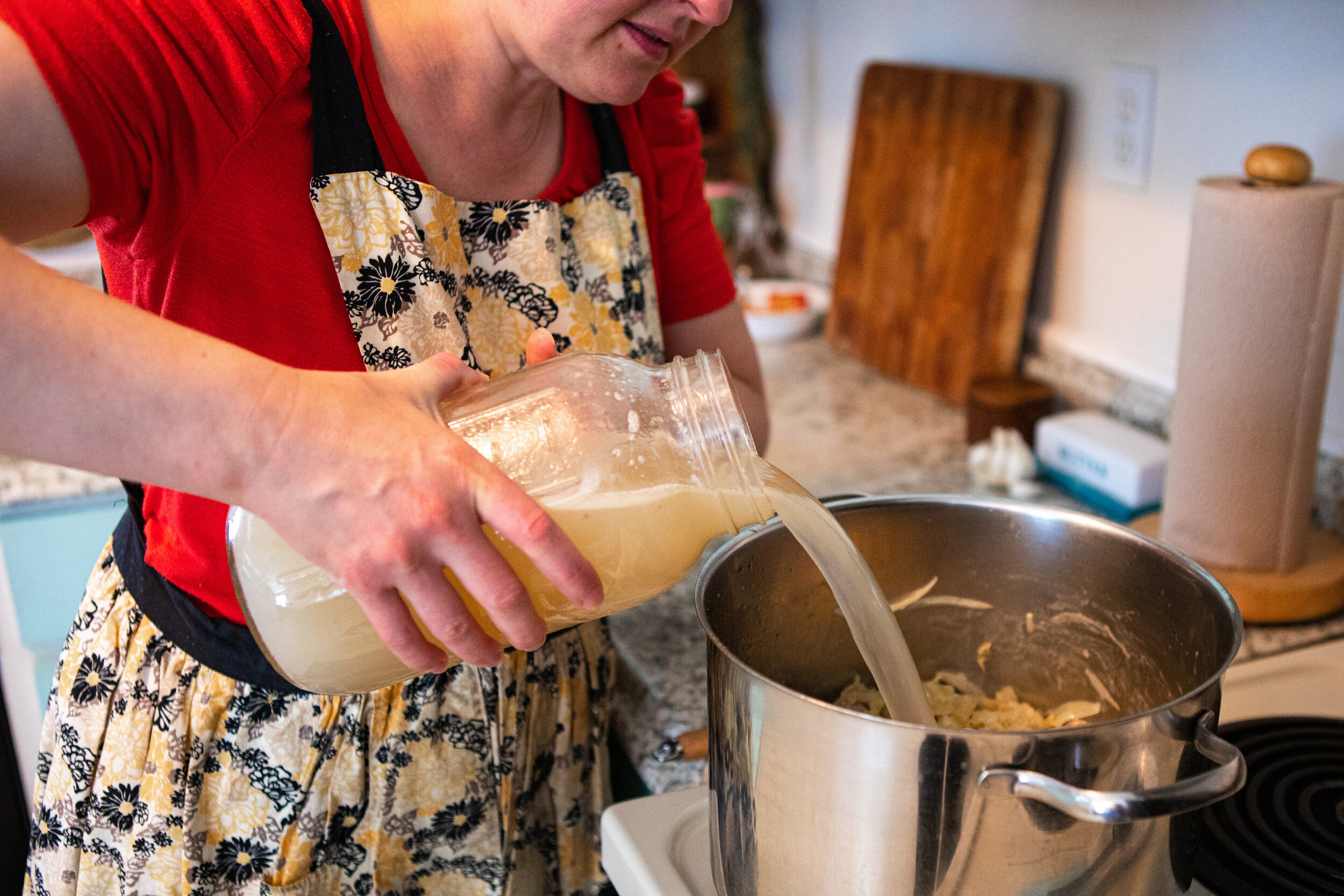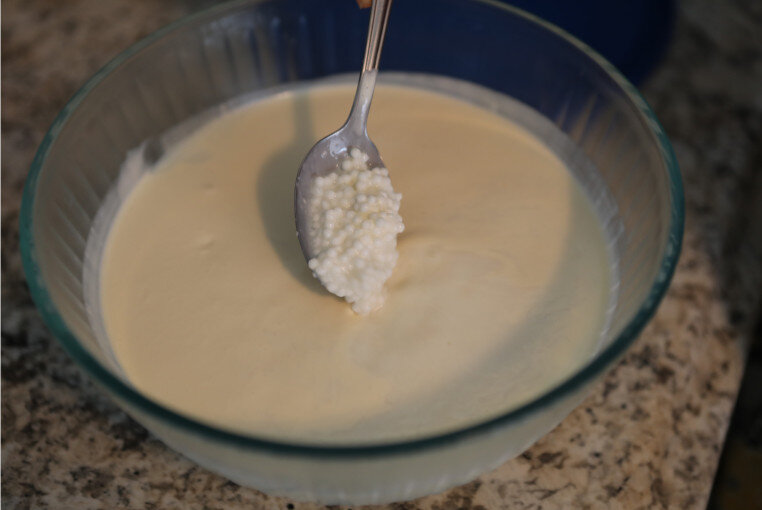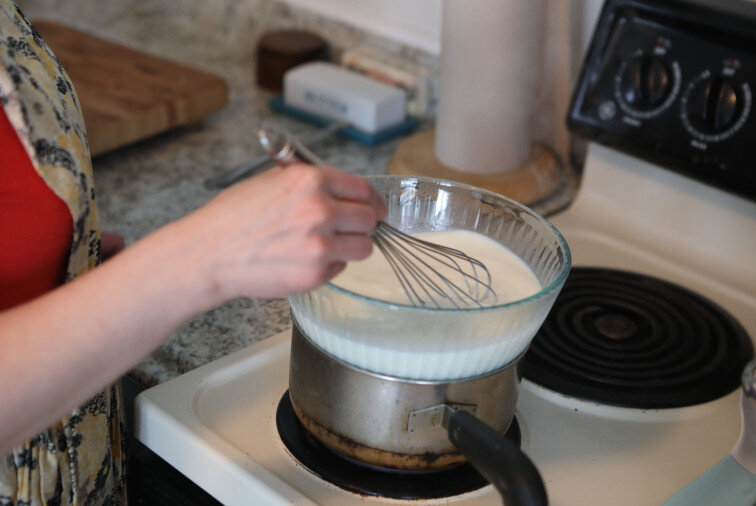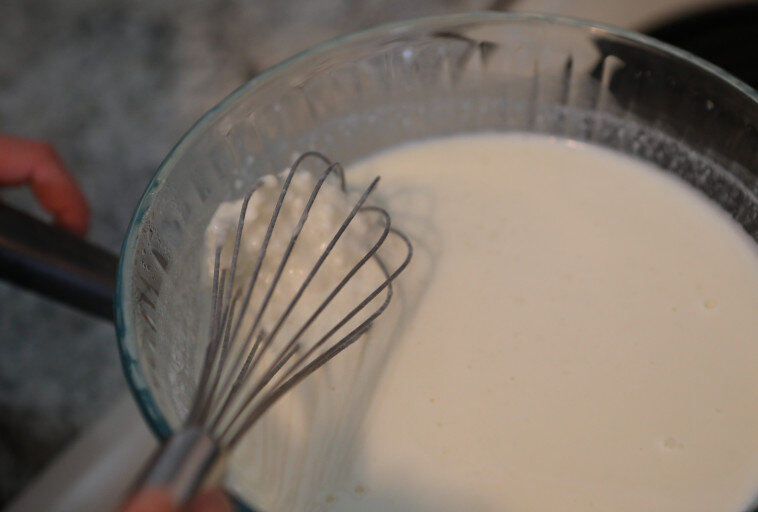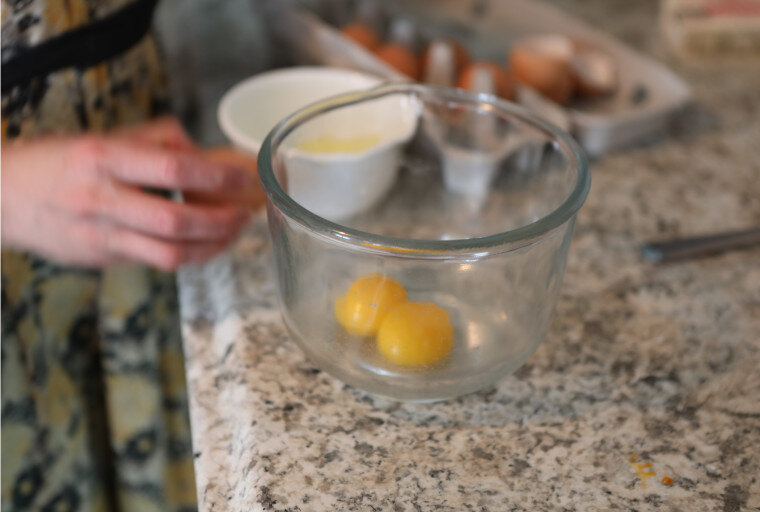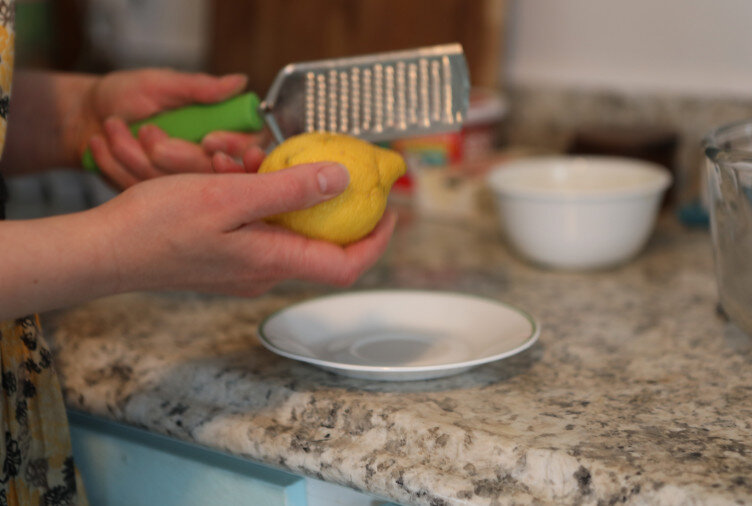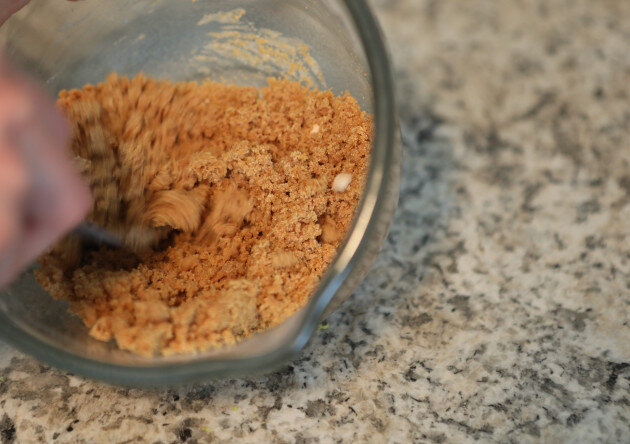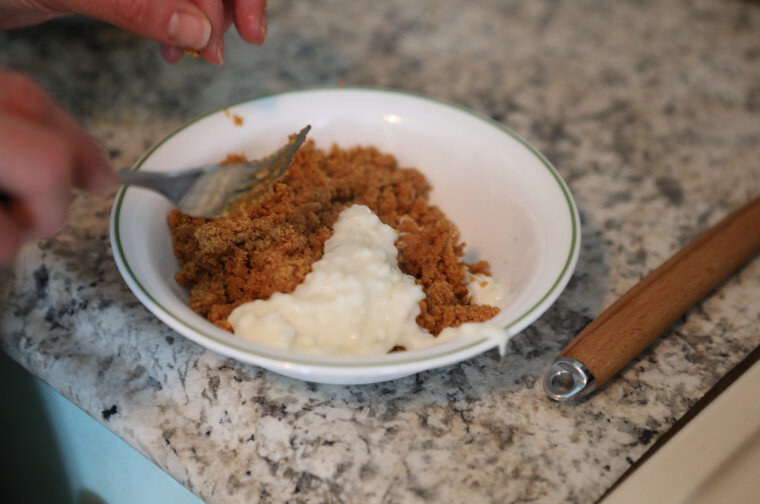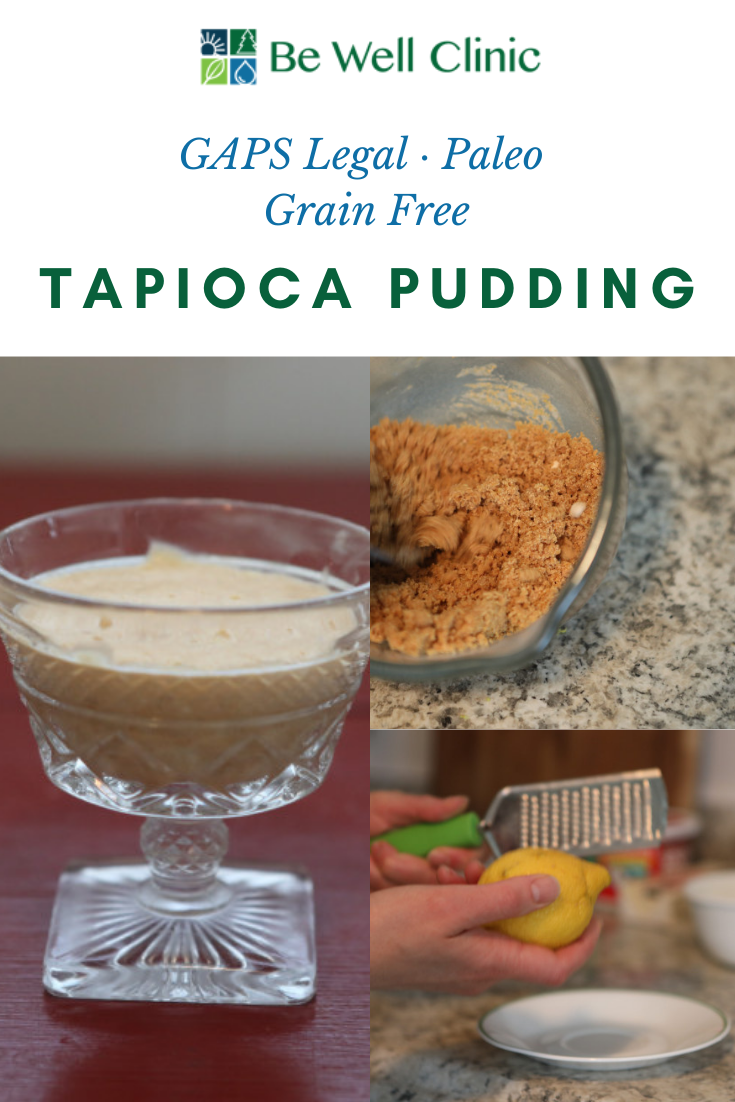With talk of viruses so prevalent, many people have been introduced to the concept of zinc deficiency. However, this is not a new thing - in the 1930s zinc was found to be essential for humans. In the 1960s it was found that deficiency of zinc can cause several symptoms. More recently we have been finding more and more symptoms associated with zinc deficiency as the world seems in general very zinc deficient. Some estimates show that zinc is involved in more body functions than any other mineral.
Switchel
What is switchel? Switchel is a fermented lemon/ginger drink that is especially refreshing during the summer when working in the heat! The fermented aspect provides probiotics for the gut, the apple cider vinegar helps you be able to drink greater amounts without feeling bloated, and the lemon and ginger help hydrate you more effectively! Plus, it is simply delicious. I try to always have a few bottles brewing throughout the summer.
Ingredients for switchel:
2-3 inches of fresh ginger (peeled and chopped)
1 cup hot water + enough filtered water to fill the jar
4 Lemons (juiced)
¼ - ⅓ cup Apple Cider Vinegar - raw, unfiltered with the mother
¼ cup raw honey
A ½ gallon mason jar (or similar vessel that can close tightly)
Additional Supplies for switchel:
½ Gallon sized mason jar or similar vessel with a sealing lid
Metal strainer
Directions for making switchel:
In a small bowl, combine the hot water with the honey. We want the water to be just hot enough to allow the honey to dissolve - it should not be boiling, or this will kill off the beneficial microbes in the honey.
To the mason jar, add the chopped ginger, fresh lemon juice and apple cider vinegar. Add the honey-water mixture, then add filtered water to fill up to approximately 1 inch from the top of the jar. Cover tightly and give the jar a few shakes to mix everything up. Loosen the lid slightly and leave on the counter at room temperature for 24-36 hours.
Once done, strain the switchel into a clean glass vessel (I use just another mason jar or a swing-top bottle) and store in the refrigerator.
Pour over ice and enjoy!
- Hollie
Switchel
Ingredients
- 2-3 inches of fresh ginger (peeled and chopped)
- 1 cup hot water + enough filtered water to fill the jar
- 4 Lemons (juiced)
- ¼ - ⅓ cup Apple Cider Vinegar - raw, unfiltered with the mother
- ¼ cup raw honey
- A ½ gallon mason jar (or similar vessel that can close tightly)
Instructions
- In a small bowl, combine the hot water with the honey. We want the water to be just hot enough to allow the honey to dissolve - it should not be boiling, or this will kill off the beneficial microbes in the honey.
- To the mason jar, add the chopped ginger, fresh lemon juice and apple cider vinegar. Add the honey-water mixture, then add filtered water to fill up to approximately 1 inch from the top of the jar. Cover tightly and give the jar a few shakes to mix everything up. Loosen the lid slightly and leave on the counter at room temperature for 24-36 hours.
- Once done, strain the switchel into a clean glass vessel (I use just another mason jar or a swing-top bottle) and store in the refrigerator.
- Pour over ice and enjoy!
Are You Overwhelmed?
Honey Sweetened Vanilla Custard
Honey Sweetened Vanilla Custard:
Ingredients for Honey Sweetened Vanilla Custard:
1 cup cream
3 egg yolks + 1 whole egg
1 tsp vanilla
2-3 tbsp honey
(sprinkle of cinnamon or nutmeg if desired)
Directions for Honey Sweetened Vanilla Custard:
Preheat oven to 340F
Place all ingredients in a blender, blend on low until just combined. Try not to blend too long - we don’t want it getting frothy.
3. Pour equally into small oven-safe cups (depending on the size, it will fill 6-10 cups).
4. Place all of the cups in a baking pan with sides at least 1.5 inches high.
5. Add water to the pan (careful not to get it in the cups!) to fill about ⅔ of the height of the cups to create a water bath.
6. Place the baking pan in the oven, bake for 45 minutes or until custard is set and not runny when poked with a toothpick.
*Note: depending on the size of your cups, you may need to adjust the baking time. If you take it out and it is still runny you can leave the custard cups in the hot water bath to set.
Practical uses:
To help relieve headaches (while pregnant or not!)
For help sleeping if you typically wake up around 1-3 am
To help babies sleep (after you’ve introduced dairy/eggs) - for this one just omit the honey, it’s still great!
For a pick-me-up snack in the afternoon when you might crave sugar or caffeine
Honey Sweetened Vanilla Custard
Ingredients
- 1 cup cream
- 3 egg yolks + 1 whole egg
- 1 tsp vanilla
- 3 tbsp honey
- (sprinkle of cinnamon or nutmeg if desired)
Instructions
- Preheat oven to 340F
- Place all ingredients in a blender, blend on low until just combined. Try not to blend too long - we don’t want it getting frothy.
- Pour equally into small oven-safe cups (depending on the size, it will fill 6-10 cups).
- Place all of the cups in a baking pan with sides at least 1.5 inches high.
- Add water to the pan (careful not to get it in the cups!) to fill about ⅔ of the height of the cups to create a water bath.
- Place the baking pan in the oven, bake for 45 minutes or until custard is set and not runny when poked with a toothpick.
- Note: depending on the size of your cups, you may need to adjust the baking time. If you take it out and it is still runny you can leave the custard cups in the hot water bath to set.
Homeschooling: Can I Do It?
Has this question been on your mind? Are you toying with the idea of homeschooling your child but unsure if you should or can? If so, more than ever, you are not alone. Across the United States, parents are trying to decide how to raise their children in a way that is congruent with their beliefs and finding that this may not include sending their kids to school. As parents weigh their options, homeschooling is becoming increasingly more appealing, although perhaps no less daunting.
GAPS Recipes for Kids
GAPS is extremely beneficial for kids: the younger the better! Here are a variety of recipes that you can make with your kids so they can see how real food is prepared and know what they are eating and why they are eating it! These recipes span all of the intro stages and full GAPS, so take a peek - if you're not on that stage yet, you have much goodness to look forward to!
Remember that during GAPS, we have lots of changes going on in our bodies. As we heal, our cravings/desires change, even our taste buds and palettes change! If something is less than appealing to your child in the beginning, try again a few weeks later. Most likely they will be ready to try some new foods throughout their GAPS journey even if they were very particular about tastes and textures before you started.
For more recipes check out our blog! There are many more where these came from!
Get your kids involved in the preparation or cooking process! When giving fermented food to your children, it’s best to consider what vegetables they already like and in what forms.
These are a kid favorite! This recipe is based on the Nourishing Traditions Cookbook but I’ve found most kids prefer carrots sliced rather than grated.
Store Bought ketchup, while reminiscent of the traditional flavor, is an unhealthy food choice due to the added sugar. Traditional ketchup is a live food and is beneficial to your body.
Pumpkin seeds are like any seed (or bean or nut.) They should be properly prepared before consuming to neutralize the acid and make them easier to digest.
A real food version of seven-layer dip! Great for a party or potluck but sometimes it is just great for lunch!
Commercial trail mixes contain candy, sweetened fruit, and unprepared nuts: not the superfoods they claim to be!
This recipe was adapted from the GAPS Pancake Recipe in the Gut and Psychology Syndrome book by Dr. Natasha Campbell. Makes 3 Pancakes.
Russian custard is a delicious desert or afternoon snack. It is rich, and just sweet enough. You can whip it up in just a few minutes.
This delicious, satisfying and helpful beverage is a wonderful way to daily consume your freshly-pressed juices, and can even be a meal.
Zucchini is great because of its versatility: it can be used hot or cold, baked or fried, and in soups, salads, breads, or even as a noodle substitute.
This spaghetti sauce recipe can be used for a lovely spaghetti night, or you can use it to make zucchini pizzas!
This soup is easy to make in large or small batches depending on how many servings you need.
Headaches During Pregnancy
Headaches are not normal. They are a common symptom in pregnancy, but this does not mean they are normal or should be expected. A diet emphasizing nutrients to support the brain, liver, pancreas, gallbladder and gut are necessary in pregnancy anyway, but even more so when it comes to preventing and relieving headaches. My hope for this article is that rather than simply shutting up your body with Tylenol, you are able to see your body’s symptoms as cries for help and know how to respond accordingly.
GAPS Friendly Homemade Yogurt
Let’s make yogurt! Around here we are very into fermented and cultured foods. Not only are they delicious but they are so full of probiotics, vitamins and minerals that are easy for our bodies to utilize!
Fermented and cultured foods can seem intimidating to those who have not made them, but once you’ve started in the world of ferments and cultures, you will see how easy, quick, and fun they are.
Yogurt is one of my family’s favorites. We use raw milk, but you can use pasteurized milk if that is all you have access to. It will need to be whole milk, preferably organic, and grass fed, and it cannot be UHT (or ultra-high temperature) pasteurized. You’ll treat it a little differently than raw milk, so pay attention to those directions. You can also use numerous types of starters - whey, creme fraiche, another yogurt - if you have any of these on hand, you can make yogurt! Like the milk, if you are using yogurt as a starter, you can use one that you previously made, or you can use yogurt from the store. Just make sure it is whole milk, organic, plain, with no other ingredients added beside the milk and the probiotic strains.
As far as cultured dairy products go, yogurt is high in protein versus fat. For this reason, we usually recommend it to people who are more prone to diarrhea or soft stools instead of people who are constipated (for whom we would recommend a higher fat content dairy like sour cream or creme fraiche).
Let’s dive in!
Ingredients for Homemade Yogurt:
Milk
Whey
Pour your milk into a pot and slowly heat it over the stove. Raw milk should be heated to 110 F. Pasteurized milk needs to be heated up to 180 F, then cooled to 110 F.
This is very important because when milk is pasteurized, it starts growing bacteria that are not beneficial, and can actually be quite harmful (this is why pasteurized milk has an expiration date and why it “goes bad” when it is too old or left out of refrigeration). We have to kill these off first before we let the culturing process happen.
Once your milk is at temperature, remove from heat and add your starter. This can be yogurt, whey or crème fraiche. Whey generally makes a thinner yogurt, a previous yogurt will make a thicker yogurt, and crème fraiche tends to make a creamier yogurt. Stir briefly to combine.
Pour the milk/starter mixture into an insulated container. I use my instant pot with it unplugged and covered. Then I wrap a couple towels around it to keep any heat from leaking out. You can use a thermos, or place your milk in a jar and put it somewhere where you can regulate the temperature such as in a dehydrator or in the oven with the pilot light on. The goal is to keep the milk at 110 F for the next 24-36 hours. Many recipes will say 8-12 hours is fine. When trying to reduce the lactose level and predigest the proteins as much as possible, we aim for at least 24 hours. I find that closer to 28-30 hours produces my favorite consistency/flavor balance. (If you are following the GAPS nutritional protocol, stick to the longer timeframe.)
When the culturing process is done (24-36 hours later), your yogurt is complete! Pour into a glass jar, store in the fridge and enjoy!
Homemade Yogurt
Ingredients
- Milk
- Whey
Instructions
- Pour your milk into a pot and slowly heat it over the stove. Raw milk should be heated to 110 F. Pasteurized milk needs to be heated up to 180 F, then cooled to 110 F.
- This is very important because when milk is pasteurized, it starts growing bacteria that are not beneficial, and can actually be quite harmful (this is why pasteurized milk has an expiration date and why it “goes bad” when it is too old or left out of refrigeration). We have to kill these off first before we let the culturing process happen.
- Once your milk is at temperature, remove from heat and add your starter. This can be yogurt, whey or crème fraiche. Whey generally makes a thinner yogurt, a previous yogurt will make a thicker yogurt, and crème fraiche tends to make a creamier yogurt. Stir briefly to combine.
- Pour the milk/starter mixture into an insulated container. I use my instant pot with it unplugged and covered. Then I wrap a couple towels around it to keep any heat from leaking out. You can use a thermos, or place your milk in a jar and put it somewhere where you can regulate the temperature such as in a dehydrator or in the oven with the pilot light on. The goal is to keep the milk at 110 F for the next 24-36 hours. Many recipes will say 8-12 hours is fine. When trying to reduce the lactose level and predigest the proteins as much as possible, we aim for at least 24 hours. I find that closer to 28-30 hours produces my favorite consistency/flavor balance. (If you are following the GAPS nutritional protocol, stick to the longer timeframe.)
- When the culturing process is done (24-36 hours later), your yogurt is complete! Pour into a glass jar, store in the fridge and enjoy!
Making GAPS Fun for Kids
Recovering From Miscarriage
It may be a difficult topic, but it’s also important, and one we believe should be discussed more than it is. That being said, more and more women are speaking out about their experiences, and it is much easier to find blogs and articles describing the process and giving directions about post-miscarriage care (especially emotional care). But it is more difficult to find information about physical recovery from a miscarriage (beyond the basics), or articles combining and acknowledging the physical and emotional connections. And that’s what this article is all about!
GAPS Legal Cocktails
Enjoy some full-GAPS legal cocktails (or mocktails)! Delicious, refreshing, good for you and beautiful!
Each drink uses a homemade honey-herb simple syrup, unflavored kombucha and fruit. You can add liquor if desired (see recommendations for each drink).
Honey Simple Syrup:
1/4 c filtered water
2 tsp honey
2 short sprigs of one herb (for these recipes we used rosemary, basil and mint)
Add each ingredient to a small pot. Simmer together for 15 minutes, stirring often to combine and making sure it does not boil. After 15 minutes remove from heat, strain the herbs out and pour the remaining syrup into a jar to cool.
Blueberry-Rosemary (Makes 2 servings)
1 1/2 cups of unflavored kombucha (either homemade or store bought - remember, the longer ferment the better with GAPS)
1/2 cup of frozen blueberries
2 tbsp rosemary simple syrup
Rosemary sprig for garnish (optional)
Recommended liquor: Gin (optional, to taste)
Blend kombucha and blueberries until smooth. (it may take several minutes to get the blueberry skins to blend completely. It is still enjoyable even if it’s not completely smooth, so don’t stress if your blender has trouble with this part!)
Add cooled simple syrup and stir to combine. Pour into two glasses, add optional ingredients if desired, enjoy!
Strawberry-Lime-Mint (Makes 2 servings)
1 1/2 cups of unflavored kombucha (either homemade or store bought - remember, the longer ferment the better with GAPS)
3/4 - 1 cup frozen strawberries
1/2 lime (slice the other half for garnish)
2 tbsp mint simple syrup
Mint and lime wedge for garnish (optional)
Recommended liquor: Vodka (optional, to taste)
Blend kombucha and strawberries until a nice icy-blend consistency. Squeeze in juice of 1/2 lime and add mint simple syrup (add 1 tbsp at a time to taste). Stir with spoon to combine. Pour into two glasses, garnish and add liquor if desired, enjoy!
Orange-Basil (Makes 2 servings)
1 1/2 cups of unflavored kombucha
Fresh juice from 1 orange
2 tbsp basil simple syrup
Basil leaf and orange peel for garnish (optional)
Recommended liquor: Scotch (optional, to taste)
Combine kombucha, orange juice and basil simple syrup, pour into 2 glasses, top with garnish and add liquor if desired. Enjoy!
All drinks are delicious without liquor. Note: small amounts of liquor is legal on full-GAPS, so make it a rare treat if you add in your choice of liquor. Just remember, as long as you are sticking to the legal foods, eat/drink intentionally, thoroughly enjoy, and move on - no guilt with a boozy treat, even with GAPS!
Hollie Bigham
RN, BSN, FNTP, CGP
Can I do GAPS while pregnant?
When I first began my deep-dive into the world of GAPS (Gut and Physiology Syndrome) several years ago, I would have said a resounding "no" to the question of working through GAPS while pregnant. There is some merit to this. The reasoning behind this mindset is that GAPS is a powerful protocol marked by detoxification and healing. While the healing aspect could be priceless for both the mother and the unborn child, the detox could potentially be dangerous for the baby.
Morning Sickness Bars
Morning sickness bars are nutrient dense, and easy on the stomach. This is Hollie’s go to food when “morning sickness” lasts morning, noon and night. Morning sickness bars will nourish your body even when you do not feel like eating. This recipe is so easy and quick once the nuts/seeds are soaked and dried. Try to soak and dry nuts and seeds in bulk to have ready when a craving for a new kind of fruit pops up! These can be whipped up within 5 minutes, and even eaten before they make it to the freezer!!
Ingredients for Morning Sickness Bars:
2 cups dates
2 cups soaked and dried assorted nuts (cashews, almonds, walnuts and pecans work well)
1 tsp sea salt
2 cup shredded coconut
1 cup soaked and dried pumpkin seeds (chopped)
2 tsp lemon zest
1 cup dried fruit (chopped)
Directions for Morning Sickness Bars:
Blend 2 cups of dates. Add in the nuts and blend well, scraping down the sides and blending as needed (approximately 1-2 min). Add sea salt and coconut and blend for 30 seconds.
Turn out mixture onto parchment paper. Knead in seeds, lemon zest and dried fruit just enough to combine evenly throughout the mixture.
Place another sheet of parchment paper on top and the mixture out until approximately 1/4-1/2 inch thick. Cut into bars (whatever shape and size you want).
Place in freezer for about 20 minutes, then wrap individually in parchment paper and keep in the fridge. Take a few out before bed and keep them on your nightstand. Eat immediately when you wake up before rising out of bed to help ease morning sickness.
Feel free to change up the nuts, fruit, add dried ginger, whatever sounds good to you at the moment.
Enjoy, mamas!
Morning Sickness Bars
Ingredients
- 2 cups dates
- 2 cups soaked and dried assorted nuts (cashews, almonds, walnuts and pecans work well)
- 1 tsp sea salt
- 2 cup shredded coconut
- 1 cup soaked and dried pumpkin seeds (chopped)
- 2 tsp lemon zest
- 1 cup dried fruit (chopped)
Instructions
- Blend 2 cups of dates. Add in the nuts and blend well, scraping down the sides and blending as needed (approximately 1-2 min).
- Add sea salt and coconut and blend for 30 seconds.
- Turn out mixture onto parchment paper. Knead in seeds, lemon zest and dried fruit just enough to combine evenly throughout the mixture.
- Place another sheet of parchment paper on top and the mixture out until approximately 1/4-1/2 inch thick. Cut into bars (whatever shape and size you want).
- Place in freezer for about 20 minutes, then wrap individually in parchment paper and keep in the fridge.
- Take a few out before bed and keep them on your nightstand. Eat immediately when you wake up before rising out of bed to help ease morning sickness.
- Feel free to change up the nuts, fruit, add dried ginger, whatever sounds good to you at the moment.
How do I get through Morning Sickness!?
After experiencing "Morning Sickness" with each of my 3 pregnancies, I have probably read every blog/recommendation possible. Many of them go into the nitty-gritty details of vomiting day and night. Let me spare you my own details, and just say that morning sickness can last all day, all night, from a few days to the entire pregnancy. It is discouraging, it changes your mood, your patience level, and your motivation.
Honey Fermented Garlic
What is the difference between fermented garlic and honey fermented garlic? The difference is mostly sweetness, but fermented garlic uses a saltwater brine, whereas honey garlic uses the liquid from the garlic cloves combined with the live enzymes and microbes in the honey to ferment. Both are very useful to support the immune system, but honey garlic has the additional benefit of raw honey. Most children like the sweetness, so it may be easier to get garlic into the children.
How long does it take to ferment? Fermentation will be well on its way in about a week, but most prefer to ferment for about a month. Even in this thick honey the garlic did float, so make sure to turn it over every day to make sure the garlic stays coated while it ferments. Check the lid before, it may come loose from the gassings.
Where do I source local, raw honey? You want to get your honey from a local farmer. One, because they’re the best. Two, local honey can help with allergies. When you buy your honey, ask the following questions to see how aligned your beekeeper is with your priorities of healthy honey:
Where are your bees located?
How do you process your honey?
Is it cold pressed or raw?
Their answers will give you an idea how close they are to pesticide areas and will give you an idea if your beekeeper is trying to avoid pesticide areas. The process they describe should include harvesting their honey, putting it in a cold spinner, and spinning the honey while filtering out pieces of beeswax and bee parts with a mesh filter. The honey then goes into buckets and is divided into the containers that you purchase. You want to find honey that is processed with no heat, and only the basic filtering. Most people who do this process will do only small batches, which is ideal.
Ingredients for Honey Fermented Garlic:
Garlic, peeled
Raw Honey
Directions for Honey Fermented Garlic:
Peel enough garlic to fit in your jar, you want both the honey and the garlic to be raw. Do not crush garlic. The bacteria and wild yeast in the raw honey and the juice in the garlic is what is used for the fermentation.
Add enough raw honey to the jar to cover the garlic cloves.
Place a lid on the jar and find a cool place for it to rest. The mixture can bubble up, so I recommend keeping a plate underneath. Turn over every day or so. Eat anytime, but it takes a month to be finished.
A few notes:
Garlic cloves can turn blue or green while fermenting. Not to worry, this is related to the sulfur content in the garlic.
Honey Fermented Garlic can be stored for long periods of time in a cool dark place.
The longer you ferment, the milder the flavor.
To eat, you eat with the honey. Keep them together. Because it has medicinal properties. Enjoy!!
Honey Fermented Garlic
Ingredients
- Garlic, peeled
- Raw Honey
Instructions
- Peel enough garlic to fit in your jar, you want both the honey and the garlic to be raw. Do not crush garlic. The bacteria and wild yeast in the raw honey and the juice in the garlic is what is used for the fermentation.
- Add enough raw honey to the jar to cover the garlic cloves.
- Place a lid on the jar and find a cool place for it to rest. The mixture can bubble up, so I recommend keeping a plate underneath. Turn over every day or so. Eat anytime, but it takes a month to be finished.
- To eat, you eat with the honey. Keep them together. Because it has medicinal properties. Enjoy!!
What is the Role of Hormones in our Body?
The endocrine system is a complex network of glands and organs, communicating with each other through hormones and other chemical messengers. It regulates a large variety of functions in our body, and if your endocrine system is off, there is a good chance you are experiencing symptoms of hormonal imbalance.
Preparing and Cooking Sweetbreads
GAPS LEGAL stage 4 and up
I am on a quest to get more organ meats into my diet. Organ meats have been lost to our culture but they are so important to having a healthy body, healthy pregnancy and healthy children. There has been a stigma for literally hundreds of years in western cultures that organ meats are eaten only by those who can’t afford the pricier cuts of meat or are “forced” to eat the entirety of their animals and therefore should generally be avoided. In countries where that stigma doesn’t exist, organ meats are prized for their nutritional value and are the most desired cuts of meat. Because organ meats are so dense nutritionally, I encourage you to join me in finding recipes to regularly bring organ meats to your family’s table as well
I’ve done lots of liver recipes so far and now I’m branching out to other organ meats. Try liver in liver pate, liver meatballs, bacon wrapped liver, jalapeno liver poppers, and simple liver shots.
Sweetbread is the thymus gland of an animal, traditionally a young calf. They do not have a strong flavor like other organ meats, making them a great “gateway” organ meat. The thymus gland is involved in the immune regulation systems. It’s primarily connected to lymph tissue and it plays in a role in adaptive immunity, which is immunity where the body learns, grows, and retains information from alien (outside of the body) microbes.
There were quite a few butchers who sold sweetbread online. Some of those were organically raised but I was happy to find sweetbreads from a person I trust at Fields of Athenry Farm.
This recipe is based on Nourishing Traditions.
Ingredients for Preparation:
1 lb Sweetbread
Filtered Water
6 tbsp Apple Cider Vinegar
1 tsp Salt
Directions for Preparing Sweetbreads:
Rinse your sweetbread with filtered water.
Add to a large bowl and cover with filtered water. Add 2 tbsp of apple cider vinegar.
Allow to sit for 2 hours, changing the water once or twice and adding new vinegar.
Rinse after 2 hours. Put in a sauce pan and cover with filtered water. Add 1 tsp salt.
Parboil for 15 minutes. Remove from liquid. The liquid can be reused if you are doing more than one sweetbread.
Cool and then remove all loose skin, tissue, fat, and membranes.
Put between unbleached parchment paper. Place a weighted plate or cookie sheet on top and keep in the fridge overnight.
Cooking Sweetbread:
Multiple different recipes that you can find in the nourishing traditions cookbook and other sources of how to cook your sweetbread once it's been prepared. The most popular way to eat sweetbreads is breaded. If you are able to tolerate breading, and want to use a traditional flour, I would recommend using einkorn flour, I get mine from Jovial.
The recipe I am preparing here today is a non-floured preparation. Modification on Sally Fallon’s sweetbread with pearl onions. I always have yellow onions on-hand, so that is what I use for this recipe. Pearl onions add a lot of flavor, so they would add a lot to this dish. Next time I remember to buy pearl onions, I will try the recipe with them. The taste is unique, although not too unlike other meats. Not as strong as liver or kidney meats. I enjoy these simply fried without the breading, and serve them alongside either a main dish a portion of scrambled eggs or over top of caramelized onions. The thymus glad is an immune organ, so eating this on top of caramelized onion will give a good boost to the immune system. The thymus gland regulates a lot of functions in the immune system, and as a general principle it is good to eat the organ of the organ that is struggling. It makes sense to consume the thymus gland which would give you the vitamins, minerals and other co-factors contained in that organ and needed for that organ as well as the photomorphogenic information and support contained in the DNA of the thymus cells.
Ingredients for Cooking Sweetbreads:
1 pair of prepared sweetbreads
½ stick butter
1 lbs yellow onions, peeled, sliced and sauteed in butter
Slicing on the bias (which is diagonal to the grain). Fry the sweetbreads in butter on a stovetop and top with caramelized onions.
Preparing and Cooking Sweetbreads
Ingredients
- 1 lb Sweetbreads
- Filtered Water
- 6 tbsp Apple Cider Vinegar
- 1 tsp Salt
- 1 pair of prepared sweetbreads
- ½ stick butter
- 1 lbs yellow onions, peeled, sliced and sautéed in butter
Instructions
- Rinse your sweetbread with filtered water.
- Add to a large bowl and cover with filtered water. Add 2 tbsp of apple cider vinegar.
- Allow to sit for 2 hours, changing the water once or twice and adding new vinegar.
- Rinse after 2 hours. Put in a sauce pan and cover with filtered water. Add 1 tsp salt.
- Paraboil for 15 minutes. Remove from liquid. The liquid can be reused if you are doing more than one sweetbread.
- Cool and then remove all loose skin, tissue, fat, and membranes.
- Put between unbleached parchment paper. Place a weighted plate or cookie sheet on top and keep in the fridge overnight.
- Slice your sweetbreads on the bias (which is diagonal to the grain).
- Then, fry the sweetbreads in butter on a stovetop and top with caramelized onions.
Beginner Gardening for the GAPS Diet
Find someone who is gardening the way you are able to for inspiration. Don’t follow someone with a five acre garden if you have containers.
Think about what’s the most important for you to grow. Things that you cannot get in a store or things that are your favorite. For me, this means growing lots of cabbages to preserve.
Beef and Sauerkraut Soup
While you may be tempted to throw all the ingredients together, the taste is incredibly different when you follow the recipe step-by-step. I knew this experientially, but finally came fully onboard after reading many of my old recipe books and realizing how many recipes contain essentially the same ingredients but tasted completely different because of the preparation order. The difference between a good recipe and a great recipe is taking the time to prepare things in a specific order.
While this is a delicious soup for anyone, it can be very healing for anyone with a short term or long term illness. Each ingredient in this soup contains its own nourishing and healing properties. Onions are high in sulfur, read more here. Sauerkraut is predigested cabbage, link to recipe. Stock is high in easily accessible amino acids and meat contains proteins, minerals, fiber and other vitamins. Make sure to salt to taste using a good quality sea salt, adding minerals to complete this healing food. It also naturally contains copious amounts of animal fat which your body will use to heal and repair your cells as well as feed the immune system. The probiotics in the sauerkraut will be killed in the cooking process however, you still will get the benefits of predigested cabbage. There is also some evidence that even killed bacterial bodies from fermented foods has an immune benefit to your body. The lamb stock I used in the soup made for a delicious flavor. But all my taste senses were focused on the sauerkraut. Which brought a richness and layered complexity.
Ingredients for Beef and Sauerkraut Soup:
Chuck Roast
½ Stick Butter
Chopped Onions
Salt
6 Cups Meat Stock (beef or lamb)
Sauerkraut
Directions for Beef and Sauerkraut Soup
Cube by slicing perpendicular to the grain into half inch slices, then cubing from there. In this recipe, I use a chuck roast, but any cut of meat would be fine. You could also start with stew meat, but be sure to cube it down to bite-sized pieces. Stew meat is often very expensive cuts of meat that did not end up in a pretty cut, so I recommend purchasing and using stew meat to get quality, affordable meat. I often purchase stew meat to get tender cuts at affordable prices.
Melt ½ stick butter, add chopped onions, salt and cook 5-6 minutes until the onions begin to soften.
When the onions are becoming soft, add beef and brown the outside of the meat cubes to trap the flavors. Sauté for 5-7 minutes to brown the outside of the cubes to trap the flavor and moisture inside. Medium High Heat.
Drain the sauerkraut and set aside the juice. When most sides are brown-ish, add drained sauerkraut and stock. Turn down heat, cover and simmer for 30 minutes, salt to taste.
This recipe is not as boring as it looks, it is actually complex and rich. Feel free to add more sauerkraut and enjoy!!
Beef and Sauerkraut Soup
Ingredients
- Chuck Roast
- ½ Stick Butter
- Chopped Onions
- Salt
- 6 Cups Meat Stock (beef or lamb)
- Sauerkraut
Instructions
- Cube by slicing perpendicular to the grain into half inch slices, then cubing from there. In this recipe I use a chuck roast, but any cut of meat would be fine. You could also start with stew meat, but be sure to cube it down to bite-sized pieces. Stew meat is often very expensive cuts of meat that did not end up in a pretty cut, so I recommend purchasing and using stew meat to get quality, affordable meat. I often purchase stew meat to get tender cuts at affordable prices.
- Melt ½ stick butter, add chopped onions, salt and cook 5-6 minutes until the onions begin to soften.
- When the onions are becoming soft, add beef and brown the outside of the meat cubes to trap the flavors. Sauté for 5-7 minutes on medium high heat to brown the outside of the cubes and trap the flavor and moisture inside.
- Drain the sauerkraut and set aside the juice. When most sides are brown-ish, add drained sauerkraut and stock. Turn down heat, cover and simmer for 30 minutes, salt to taste.
- Add the sauerkraut juice and enjoy!!
Tapioca Pudding
This is my favorite pudding of all time & I’ve been wanting to make this recipe for years! Finally, I got around to it. Be prepared for multiple steps to make tapioca pudding. I can see why most people choose the instant food version. The real food version is absolutely worth the effort!
This recipe needs to be started the night beforehand. So, make sure to plan ahead! This also can be done days ahead of time, as it is served well chilled. So, if you are planning on serving this delicious dessert, prepare at your convenience up to a week beforehand.
Ingredients for Tapioca Pudding
1 cup pearl tapioca
4 cups raw milk
3 eggs
½ teaspoon sea salt + pinch
¾ cup date sugar
1 lemon, grated
Directions for Tapioca Pudding
Soak tapioca overnight in 4 cups of raw milk.
At least 8 hours later, add to a double broiler. Cook about 45 minutes or until thick. Keep stirring it every few minutes as it cooks to prevent it from clumping. Stir constantly near the end to prevent boiling. This is a great recipe to make with your children, as the tapioca will need to be stirred almost constantly near the end. It may be a job that’s best suited for an older child. When you think the mixture is thick and done enough, test your tapioca pearl to make sure they are cooked.
In a separate bowl, blend the egg yolks, ½ tsp of sea salt, date sugar and lemon rind.
When the tapioca is thick, temper the egg mixture by adding a spoonful of the hot mixture to the eggs. Then add the warmed egg yolk to the tapioca. Cook for 5-10 minutes over the double boiler or until the sugar is dissolved and the mixture is smooth.
Beat egg whites with sea salt until softly stiff and fold gently into the mixture.
Chill and enjoy.
The original recipe from nourishing traditions is to use rapadura. I find my body does better with fruit as a sweetener so I prefer to use date sugar. I find it to be a 1 to 1 substitution. If you choose rapadura or date sugar the end result will be off-white.
*Eating uncooked or raw eggs or feeding raw eggs to your pets can pose a risk to your health.
Tapioca Pudding
Ingredients
- 1 cup pearl tapioca
- 4 cups raw milk
- 3 eggs
- ½ teaspoon sea salt + pinch
- ¾ cup date sugar
- 1 lemon, grated
Instructions
- Soak tapioca overnight in 4 cups of raw milk.
- At least 8 hours later, add to a double broiler. Cook about 45 minutes or until thick. Keep stirring it every few minutes as it cooks to prevent it from clumping. Stir constantly near the end to prevent boiling. This is a great recipe to make with your children, as the tapioca will need to be stirred almost constantly near the end. It may be a job that’s best suited for an older child. When you think the mixture is thick and done enough, test your tapioca pearl to make sure they are cooked.
- In a separate bowl, blend the egg yolks, ½ tsp of sea salt, date sugar and lemon rind.
- When the tapioca is thick, temper the egg mixture by adding a spoonful of the hot mixture to the eggs. Then add the warmed egg yolk to the tapioca. Cook for 5-10 minutes over the double boiler or until the sugar is dissolved and the mixture is smooth.
- Beat egg whites with sea salt until softly stiff and fold gently into the mixture.
- Chill and enjoy.
- The original recipe from nourishing traditions is to use rapadura. I find my body does better with fruit as a sweetener so I prefer to use date sugar. I find it to be a 1 to 1 substitution. If you choose rapadura or date sugar the end result will be off-white.

